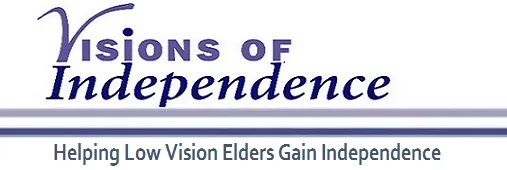How using peripheral vision makes doing tasks easier
When a patient develops macular degeneration, they develop a blind spot in the center of their vision. We humans use our central vision to do almost all of your daily living tasks. That is why patients who have macular degeneration struggle so much to do their everyday living. They are forced to use their peripheral vision which has much less acuity than their central vision.
The key is to teach patients to use their peripheral vision instead of looking directly at something they want to see. This is called “Eccentric Viewing.” The blind spot is more like an island than a circle. Accordingly there are locations around the center vision which offer a bit more vision. We teach people to think of the face of a clock when looking ahead. While keeping their heads straight, we tell them to look up, down, left or right. Again, thinking of a clock face, their best vision might be at 1:00, 4:00, 8:00 or 11:00. We help our patients locate their personal “Sweet Spot” of vision. Patients learn to have an easier time seeing people or objects out of the corner of their eye. It really takes a great deal of training and practice to learn not to look straight when trying to see something. We teach our patients exercises to do Eccentric Viewing. It really is unnatural and patients have to overcome decades of how they look at things.
We are pleased to say that we have had many successes working with some motivated, determined patients. When mastered, 8can profoundly make doing many, many tasks easier.
